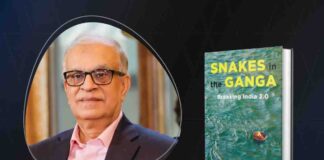While globalization has compelled industrialized countries to reduce wages to be competitive with those in the developing world, American Universities have evolved to fulfill the nation’s need for STEM workers and meet the perceived challenge of India and China to American technological supremacy.
By Rajiv Dabhadkar
Globalization induced labor displacement creates labor sinks and labor redundancies in labor market economies globally. This is more evident in advanced economies like The Americas, where there is a scarcity as well as a surplus of STEM (Science, Technology, Engineering and Mathematics) workers. The academic sector, for instance is generally oversupplied with STEM professionals; but the private and government sectors, face scarcity. Then again, if there indeed is a scarcity of STEM workers in the private sector, why do they have relatively flat earnings trajectories and high exit ?
The answer lies in the rapidly changing knowledge economy and newer innovative technologies – which introduces new job tasks and makes old ones obsolete. Because technology is changing at a rapid pace, STEM workers have to constantly upgrade their skills. Those who do not, become redundant and have little option but to leave STEM jobs. This is already happening, and as a result, we have a high overall exit rate in STEM occupations.
In most professions, with experience comes perfection and higher salaries. In the IT sector, sadly, experience has no or relatively low reward. Hence, the flat earning trajectories.
As long as Indian wages are kept relatively low, work will keep getting transferred from the US and other major markets to India, mitigating the impact of skill obsolescence. But, at some point, the pace of obsolescence will overtake the Indianisation of global jobs.
The most sombre lesson is that Indian IT workers face a difficult future, which might at some point become precarious, but not for those that are working to create the next big wave in technology, and those who can guess and join the next wave.
So rather than worry about Trump’s immigration policy and the automation robots, Indian IT workers need to constantly upgrade rather than just get paid to develop programs and products that make their jobs redundant.
60% of STEM student enrollment in the US universities today are International Students from the ‘third world’ and these figures are rapidly growing.
The National Association of Manufacturing and Deloitte report that the United States will have to fill 3.5 million STEM jobs by 2025, with more than 2 million of them going unfilled because of the lack of highly skilled candidates in demand.
Of late, the number of H-1B visa denials has increased, Requests for Evidence to support the petitioned H-1B applications have increased as well. There is also a proposal to revoke work permits for H-4 visas issued to the families of H-1B visa-holders.
However, foreign students graduating from STEM fields get two-year visas for optional practical training (OPT), which allow them to work in the US, whereas those graduating in other non – STEM fields get a single-year OPT visa.
While American Universities have pioneered the intake of foreign students since the past 3 decades, the ecosystem has witnessed a sea change. Today, American Universities are evolving in their business models and these are welcome initiatives that tightly integrate the domestic issues around STEM scarcity.
Many American Universities are beginning to offer what is known as the Hybrid masters program. Under the program, enrolled students have the flexibility of being employed during the first year of their program in India, while the second year (final two semesters) are taken on campus in the United States. Thereby allowing them to maintain a full-time international student status, and further qualifying for the Optional Practical Training and a subsequent work visa that guarantees a pathway to permanent residency.
In conclusion, while globalization has compelled industrialized countries to reduce wages to be competitive with those in the developing world, American Universities have evolved to fulfill the nation’s need for STEM workers and meet the perceived challenge of India and China to American technological supremacy.
The author is the founder of National Organization for Software and Technology Professionals (NOSTOPS)








